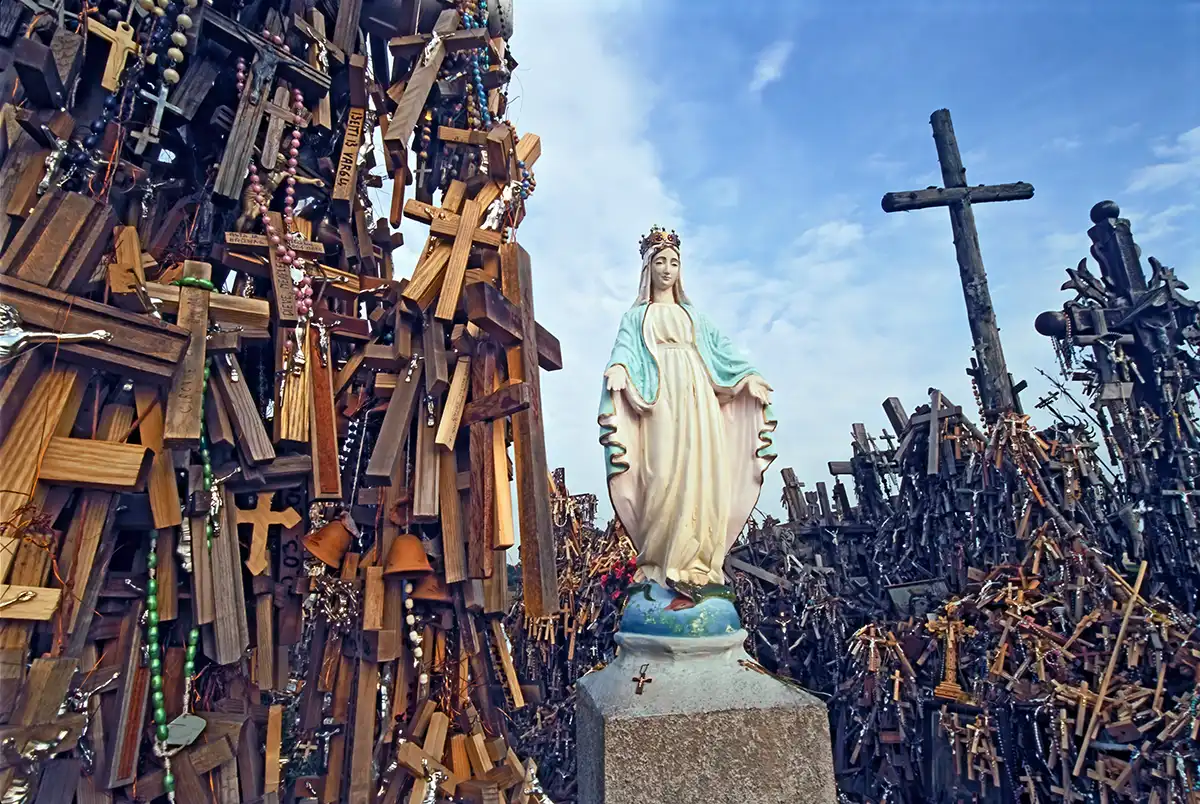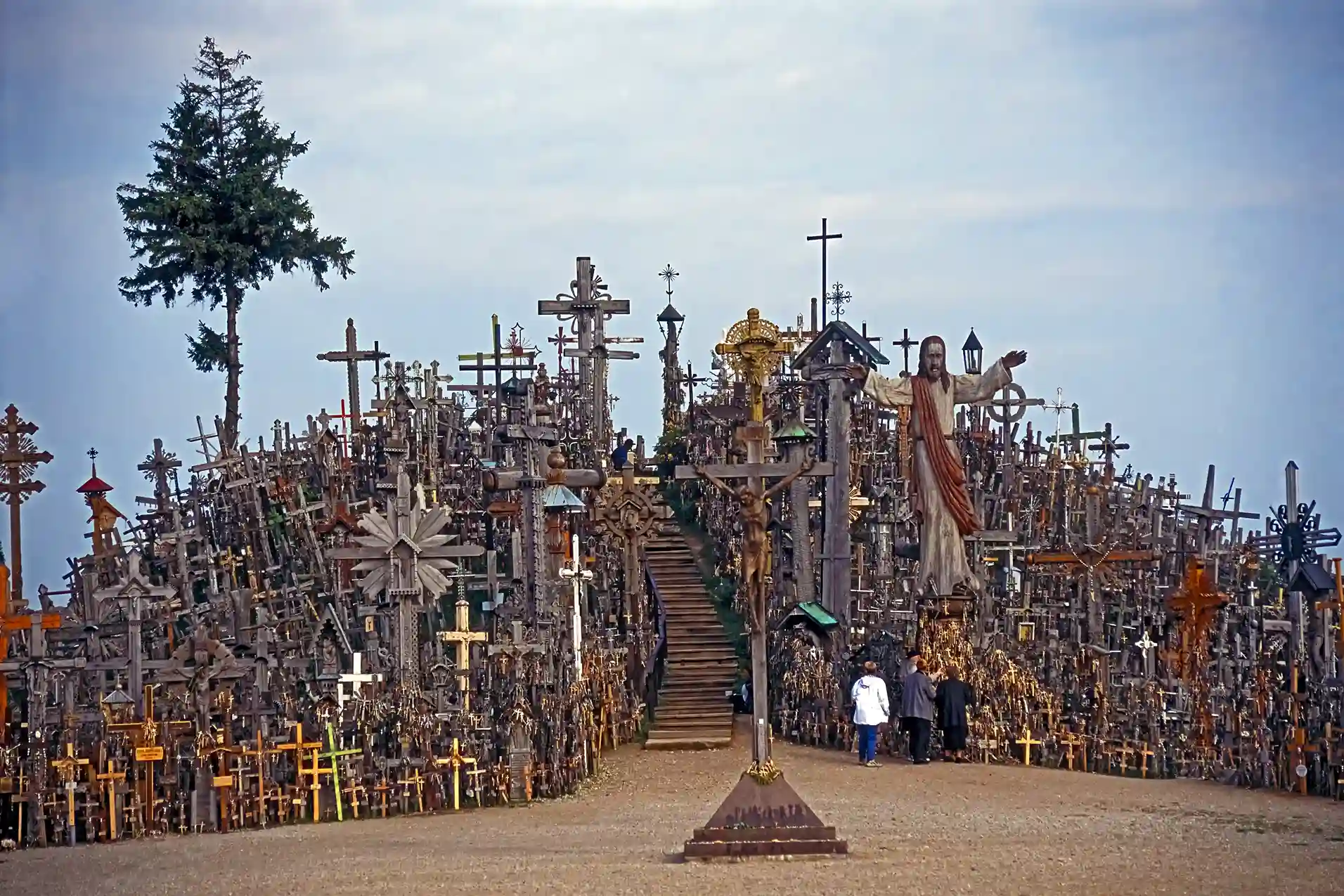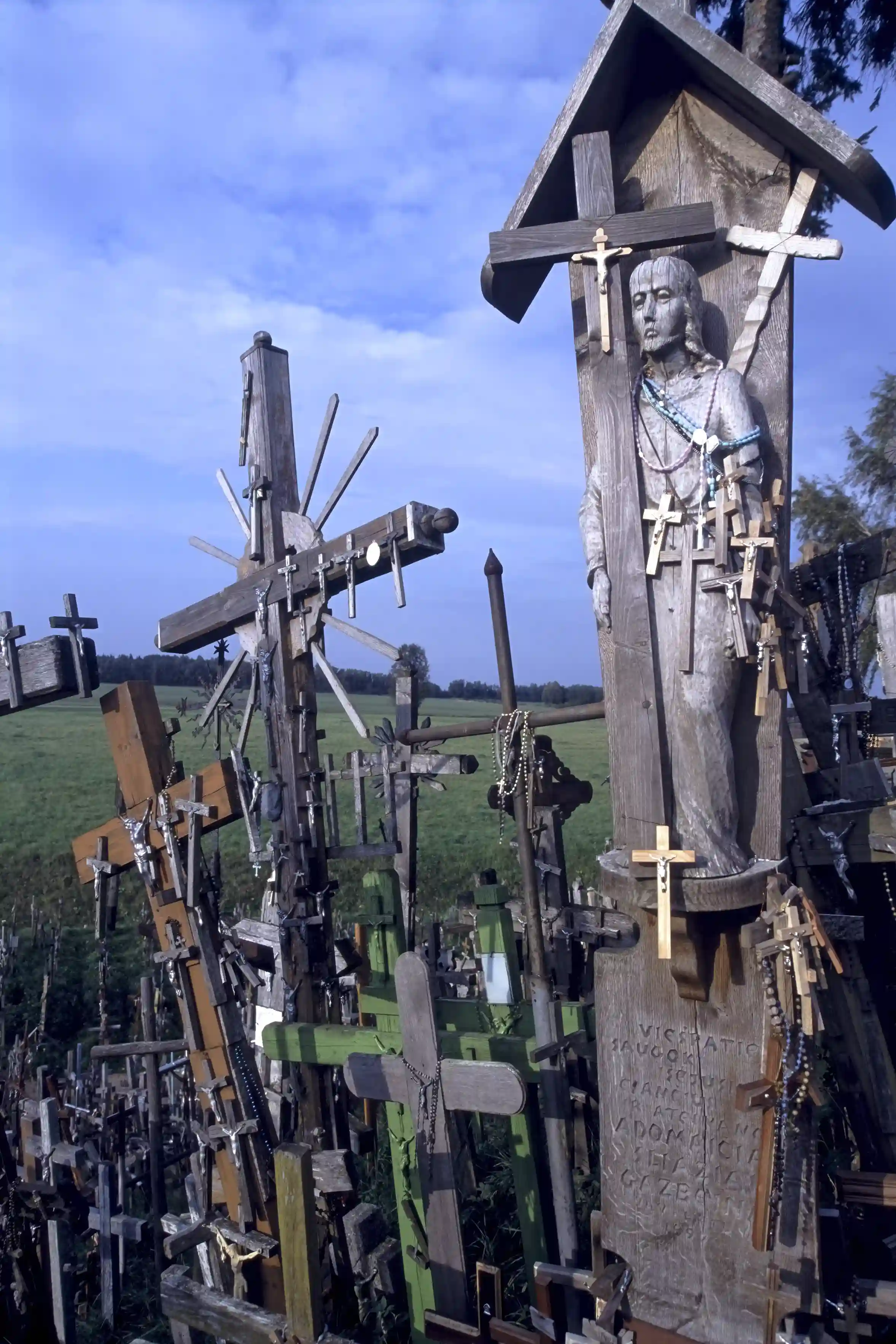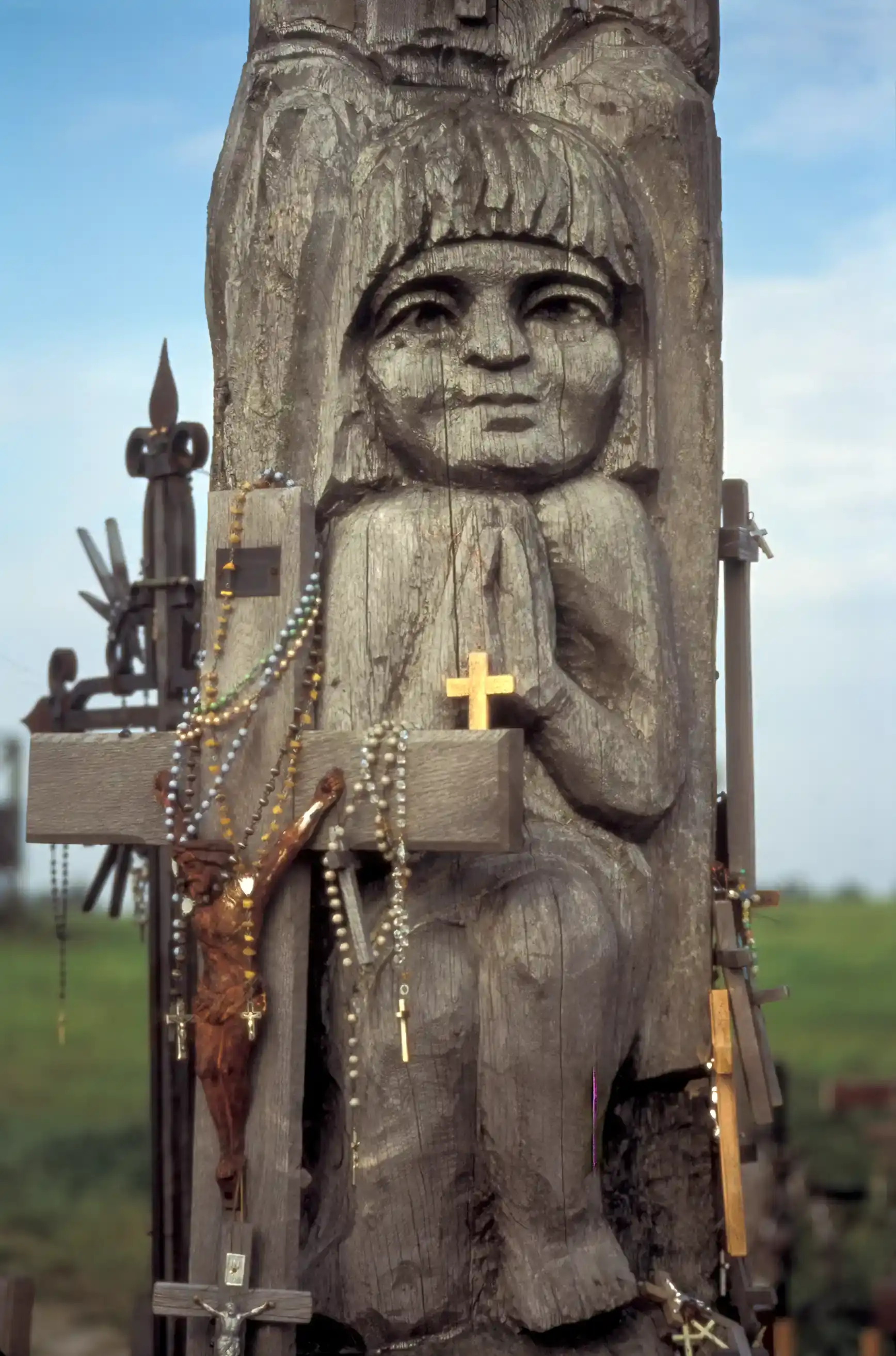Hill of Crosses
The Hill of Crosses, Kryzių Kalnas, located 12 kilometers north of the small industrial city of Siauliai (pronounced shoo-lay), is the Lithuanian national pilgrimage center. Standing upon a small hill are hundreds of thousands of crosses representing Christian devotion and a memorial to Lithuanian national identity.
The city of Siauliai was founded in 1236 and occupied by Teutonic Knights during the 14th century. The tradition of placing crosses dates from this period and probably first arose as a symbol of Lithuanian defiance of foreign invaders. Since the medieval period, the Hill of Crosses has represented the peaceful resistance of Lithuanian Catholicism to oppression. 1795, Siauliai was incorporated into Russia, but it was returned to Lithuania in 1918. Many crosses were erected upon the hill after the peasant uprising of 1831- 63. By 1895, there were at least 150 large crosses; in 1914, 200, and by 1940, there were 400 large crosses surrounded by thousands of smaller ones.
Captured by Germany in World War II, the city suffered heavy damage when Soviet Russia retook it at the war's end. From 1944 until Lithuania's independence in 1991, Siauliai was a part of the Lithuanian Soviet Socialist Republic of the USSR. During the Soviet era, the pilgrimage to the Hill of Crosses was a vital expression of Lithuanian nationalism. The Soviets repeatedly removed Christian crosses placed on the hill by Lithuanians. Three times, during 1961, 1973, and 1975, the hill was leveled, the crosses were burned or turned into scrap metal, and the area was covered with waste and sewage. Following each of these desecrations, local inhabitants and pilgrims from all over Lithuania rapidly replaced crosses on the sacred hill. In 1985, the Hill of Crosses was finally left in peace. The sacred hill's reputation has since spread worldwide, and every year, it is visited by many thousands of pilgrims. Pope John Paul II visited the Hill of Crosses in September of 1993.
The size and variety of crosses are as impressive as their number. Beautifully carved out of wood or sculpted from metal, the crosses range from three meters tall to countless tiny examples hanging profusely upon the larger crosses. An hour spent upon the sacred hill will reveal crosses brought by Christian pilgrims from all around the world. Rosaries, pictures of Jesus and the saints, and photographs of Lithuanian patriots also decorate the larger crosses. On windy days, breezes blowing through the forest of crosses and hanging rosaries produce a uniquely beautiful sound.

Martin Gray is a cultural anthropologist, writer and photographer specializing in the study of pilgrimage traditions and sacred sites around the world. During a 40 year period he has visited more than 2000 pilgrimage places in 160 countries. The World Pilgrimage Guide at sacredsites.com is the most comprehensive source of information on this subject.








